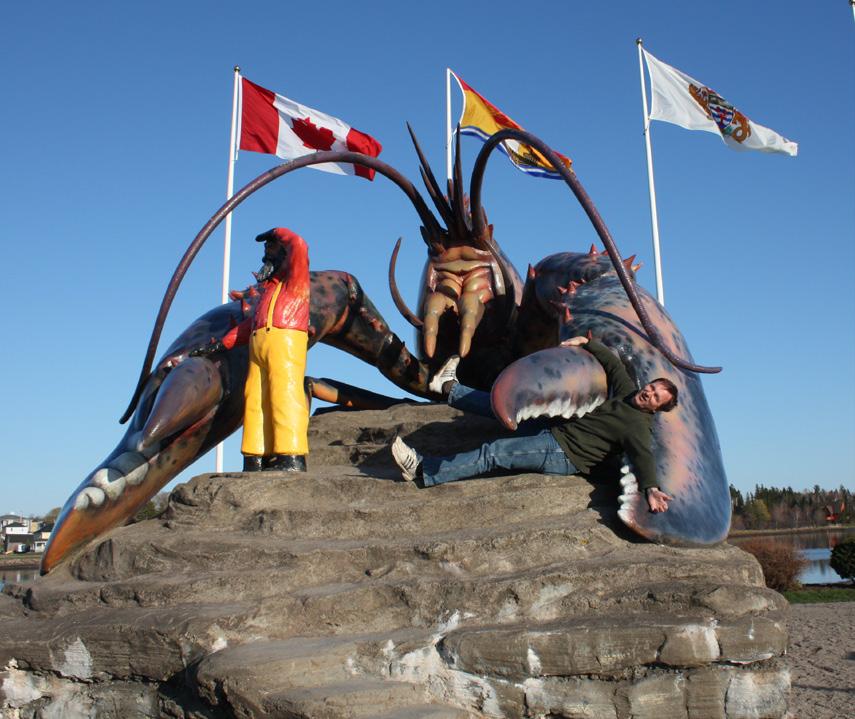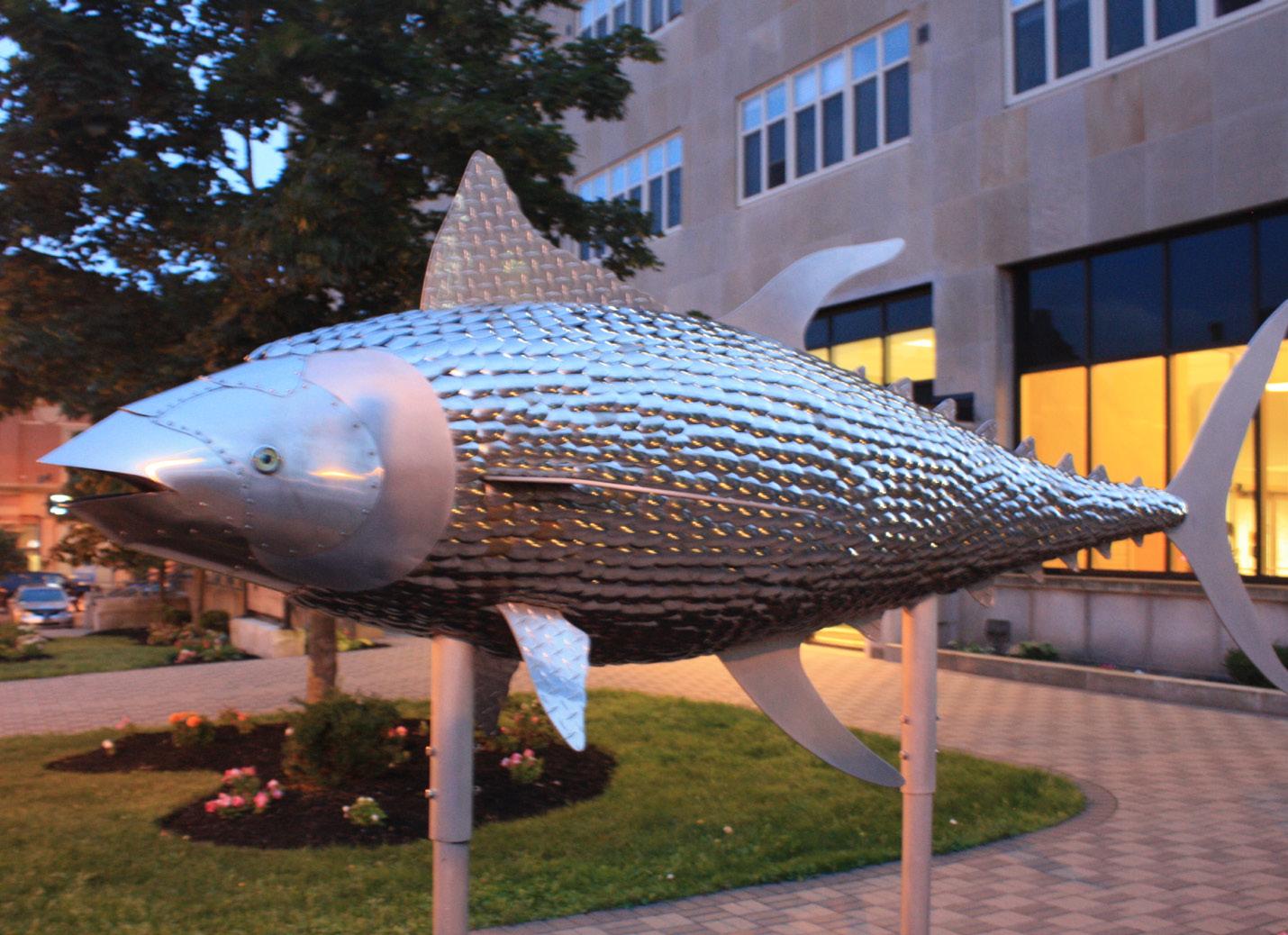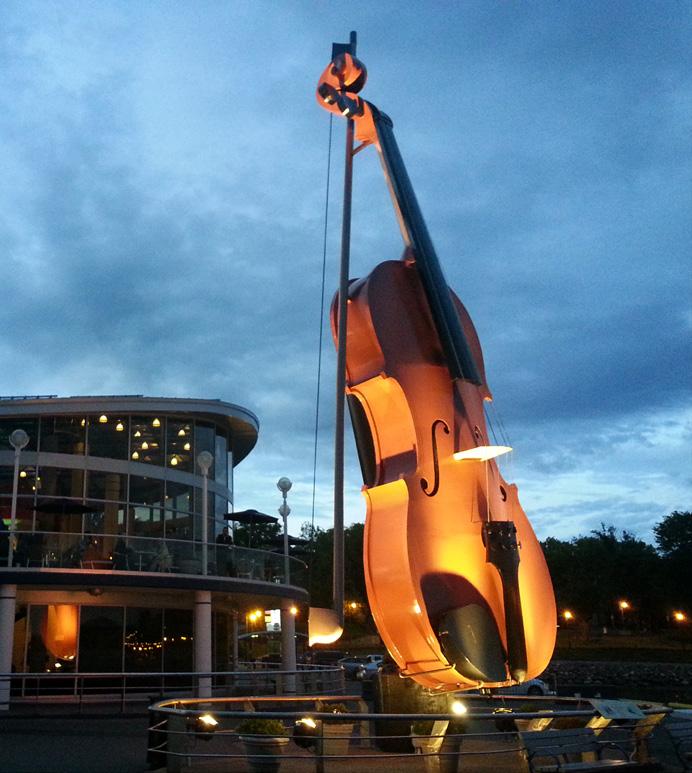
4 minute read
Of giant lobsters and drunken lampposts
East Coast public art amuses and delights
STORY AND PHOTOGRAPHY BY DARCY RHYNO
I’m on my back, clenched in the crusher claw of a lobster the size of a small airplane. I’m not the first to fall victim to the behemoth and I won’t be the last. In fact, several people are waiting for me to tumble out so they can take my place. I could be playing Victim One in a 1950s B-movie, but this is no film set. It’s the giant lobster sculpture that welcomes visitors to Shediac,
New Brunswick. The 90-ton beast stands with Sudbury’s supersized nickel, Alberta’s giant beaver and Moose Jaw’s massive moose as one of the most recognizable works of public art in Canada, all of them much larger than life.
A community’s sense of humour is on full display at these mammoth monuments, but there’s much more to public art than a few laughs. Communities all over the East Coast are enriching street life, animating buildings, and adding interest to parks with imaginative art that links people to natural and human history. As with the Shediac lobster, many pieces honour a local iconic animal.
In Barrington, Nova Scotia, it’s also the lobster that the community has chosen to celebrate. A dozen human-scale crustaceans painted by local artists stand on their tails here and there in a community where the lobster fishery is king. About two hours drive north along the coast in Lunenburg, metal fish hang from posts all over town.
Sculptures of Newfoundland dogs and Labrador retrievers in St. John’s bring provincial geography to life. One pair gazes across the harbour to Signal Hill. A second pair looks back from the hill to the first.
In Montague, PEI, a trio of larger-than-life



A tuna sculpture in Charlottetown, PEI.


stand preening and drying their wings on posts beside the bridge over Vesseys Creek, where the real birds are a common sight.
In the past, public art often honoured historic figures, nearly always white male politicians, royalty or military figures. No more. While many of these figures remain where they’ve stood for many decades, public art has moved on. Statues and fountains in the Halifax Public Gardens are a perfect fit with the Victorian era green space, but elsewhere in the city, a modern outdoor art gallery is developing, especially along the waterfront. Three drunken lamp posts lean and seem to stagger on a pier. One of them is slumped flat on the wooden deck. Mackerel benches and a life size metal whale’s tail reference the city’s seaside location, as does The Wave, a popular work that has sparked more conversation and controversy than any other single piece among the dozens waiting to be discovered.
At Kingsbrae Gardens in St. Andrews, New Brunswick, an annual sculpture competition fills its 27 acres with original works. Some become permanent garden fixtures. At another park in town, two sculptures are among the dozens of large stone pieces on the International Sculpture Trail that links communities across northern Maine and southern New Brunswick.
Most outdoor galleries feature works by several artists. The three cormorants in Montague, PEI are part of a gallery with several murals, including one made of wooden puzzle pieces. In Botwood, Newfoundland, the entire collection is of murals by several artists depicting the history of the community. The collection in Shediac starts with the giant lobster, but includes murals, wrought iron profiles of local figures and a totem pole. There’s even a Scrabble-like work that spells “Shediac” in recognition of the town’s claim as the place where a pre-cursor of the game was invented.
Other collections are by individual artists like Hooper’s People in Saint John, New Brunswick. Stocky wooden figures doing ordinary things mingle with visitors who can’t resist posing for photos with them. One piece called “People Apart, Moving Together” combines a mural of people walking through an arched entrance into the Saint John Trade and Convention Centre with life size sculptures of people who seem to be emerging from the same entry.
The Shediac lobster isn’t the only oversized public art on the East Coast. Nova

One of three cormorant sculptures in Montague, PEI. Detail from a work in St. Andrews, NB.
Sydney, Cape Breton’s giant fiddle.
Scotians know well the 12-metre tall statue of Glooscap, the Mi’kmaq god, who rises over the highway near Truro. The world’s largest axe stretches to 15 metres in Nackawic, New Brunswick, a town where most people work in forestry. The double-headed blade with the yellow handle looks like it was sunk into a tree stump by Paul Bunyan. Visitors love taking selfies here, dramatically dwarfed by the 55-ton artwork. In Sydney, Cape Breton, a giant fiddle welcomes visitors to the port and the city. It’s one of my favourite public art works on the East Coast. I have fond memories of it after seeing a live performance here by Canada’s pre-eminent fiddler and Cape Breton’s pride and joy, Natalie MacMaster. Then again, whether it’s in the audience beneath a 20-metre fiddle or in the clutches of a giant lobster, visiting pretty well any public art makes for lifelong memories.










